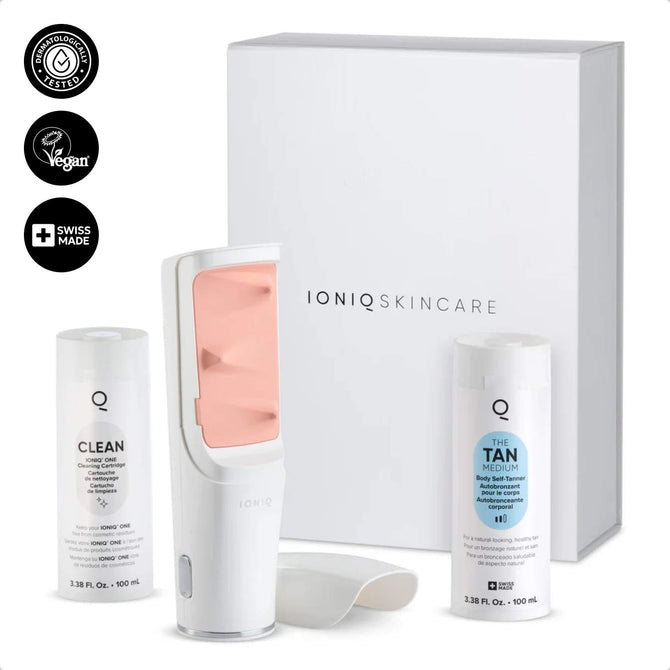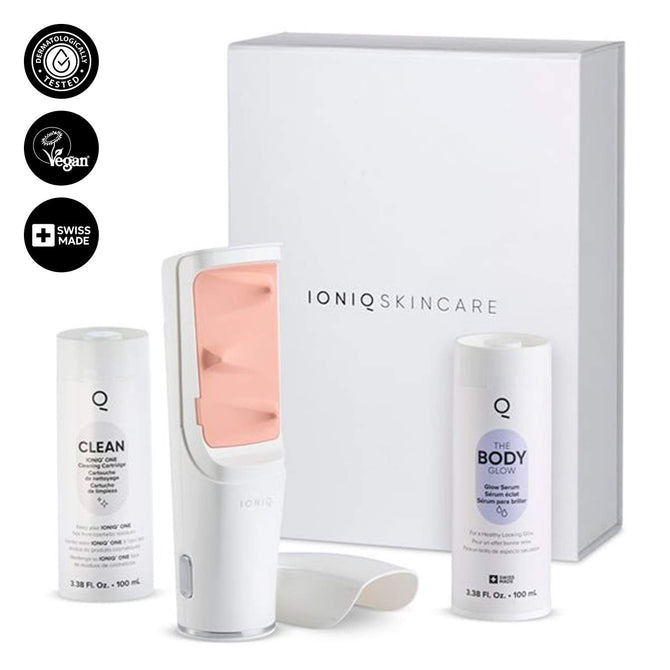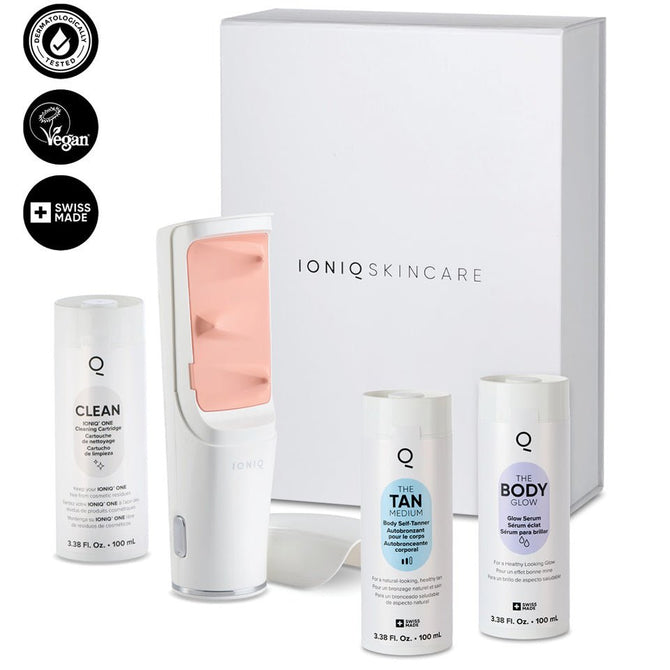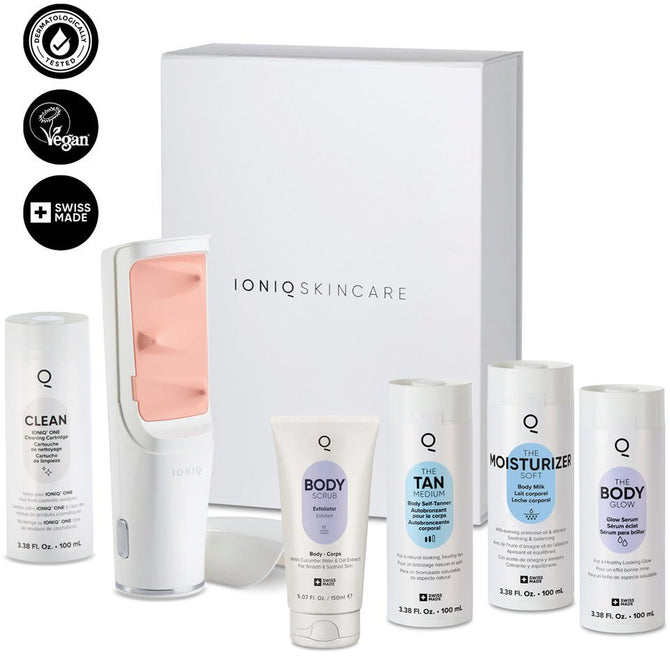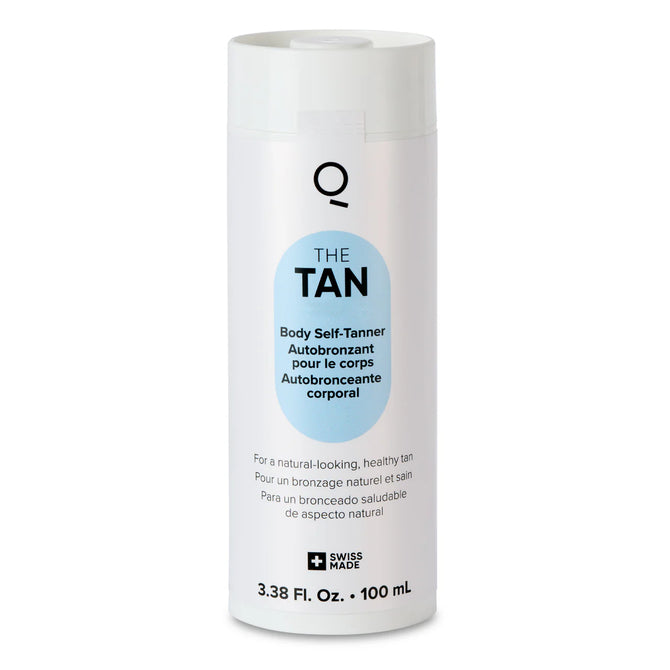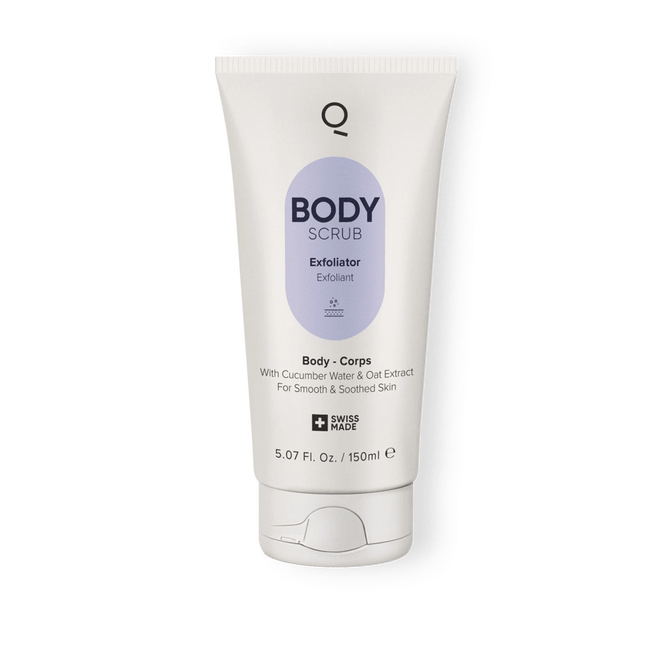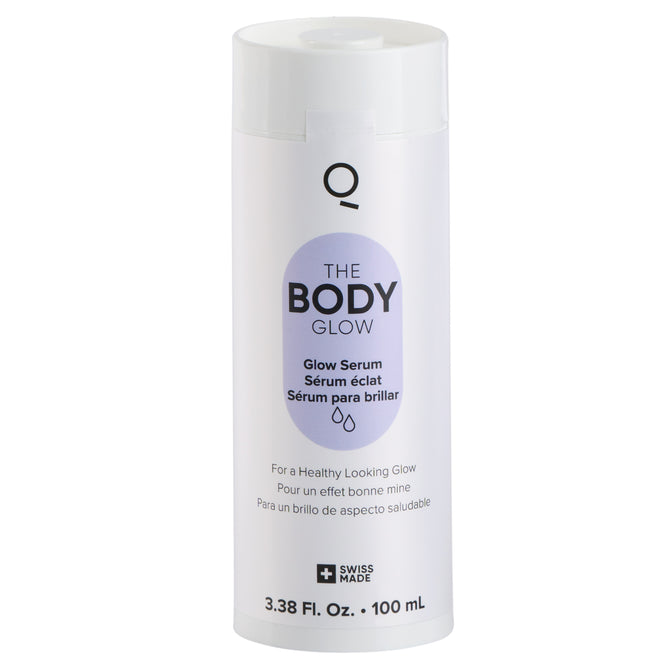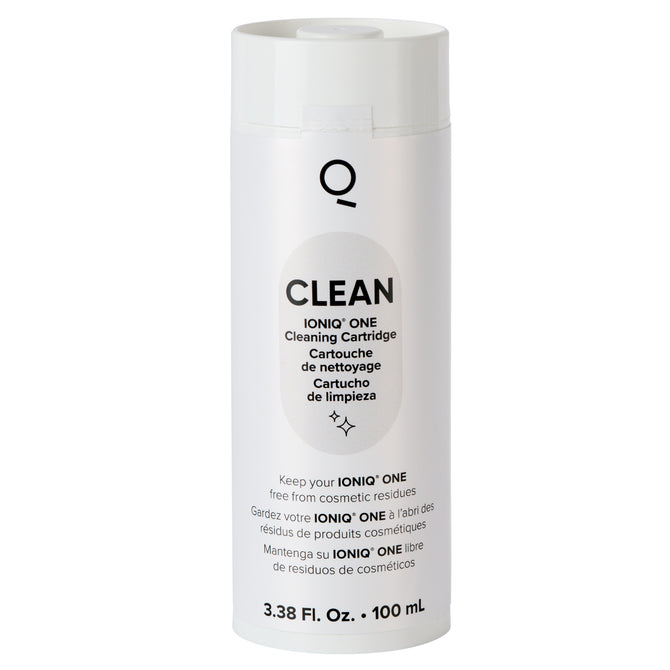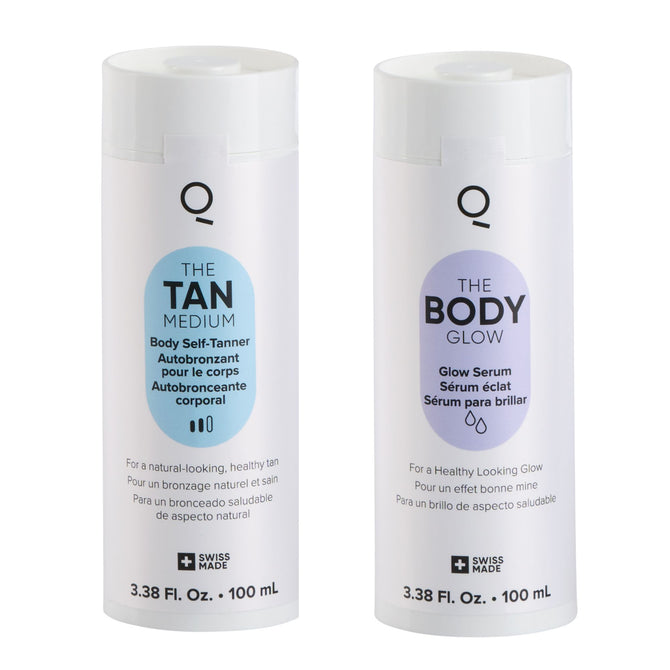
Spray tans can feel a bit like magic. You walk into a booth or stand in front of a sprayer, get misted for a few minutes, and a few hours later you look like you just got back from vacation. If you have ever asked yourself how does a spray tan work behind the scenes or wondered how a spray tan worked on your skin the first time you tried one, you are not alone. The way at home spray tanning works is actually a simple chemical reaction on the very top layer of your skin, but a lot of small details decide whether the result looks smooth and natural or streaky and uneven.
Understanding how spray tans work makes it much easier to avoid orange tones, patchy spots, or color that fades in strange patterns. It also helps you see why some methods, like manual salon spray guns or thick self-tan lotions, can be hard to control. They depend a lot on human skill, how well you can reach your own back, and how evenly the product lands on your skin. That is why many people end up with uneven color, dark ankles, or missed patches along the sides of the body.
In this guide, we will break down the spray tan process explained in everyday language. You will see what happens to your skin during an at home spray tan, why the color shows up later instead of right away, and how your own skin type can change the result. Once you understand how spray tanning works at a basic level, it will be easier to tell the difference between methods that truly respect your skin and those that just add another layer of color and hope for the best.
How Does a Spray Tan Work? The Basics Explained in Simple Terms
At its core, a spray tan is not paint and it is not dye. It is a color reaction that happens when a special ingredient in the tanning liquid meets the dead skin cells on the surface of your body. Most at home spray tan formulas use a sugar-based ingredient called DHA. When this ingredient touches the outer layer of your skin, it reacts with amino acids in that layer and slowly turns darker. This reaction is similar to what happens when you bake bread or toast, where the outside slowly browns.
The spray tan process explained in simple terms looks like this:
- Your skin is cleaned and often exfoliated first.
- A fine mist of tanning liquid is sprayed onto your body.
- The liquid dries on your skin.
- Over the next few hours, the color appears and deepens.
- As your dead skin cells shed, the color fades away.
All of this happens on the very top layer of your skin. The spray does not change your natural melanin and it does not reach into deeper layers. That is a big difference from UV tanning in beds or outdoors, which affects deeper cells and comes with well-known skin risks.
What Happens to Your Skin During a Spray Tan
During an at home spray tan, your skin goes through a few quick stages.
First, the tanning liquid lands on the outermost layer of your skin, called the stratum corneum. This layer is made of dead, flattened skin cells. They act like tiny tiles stacked on top of each other, forming a barrier between your body and the outside world.
Right after the spray, your skin may feel cool or slightly damp. As the liquid dries, DHA starts to settle into the thin film of dead skin cells. Over the next few hours, DHA reacts with amino acids in those cells. This reaction slowly creates new pigments on the surface, which make your skin look darker.
While this is happening:
- Your living skin underneath does not change color.
- Your natural skin tone and undertone still show through.
- Only the very top layer is turning a deeper shade.
This is why an at home spray tan looks most intense for a few days and then starts to fade as your body sheds those dead cells through normal cell turnover. Showers, shaving, and friction from clothing all speed up the shedding of this top layer, which is why aftercare has such a big impact on how long your color lasts.
Why the Spray Tan Reaction Creates Color on the Surface Layer
The spray tan reaction is designed to stay on the surface. DHA is a relatively large molecule and it is water-soluble, which means it does not travel deep into your skin. Instead, it stays close to where it lands and reacts with the proteins in the dead cells.
This surface-only reaction has a few important effects:
- It keeps the process temporary. As the top layer sheds, the color goes with it.
- It allows you to reset. If you do not reapply, your skin returns to its natural tone.
- It keeps the color mostly on the outer barrier instead of inside your living tissue.
From a comfort point of view, this is helpful. You are not changing how your skin works at a deep level; you are adding a temporary color shield on top. The downside is that anything that roughs up that outer layer too fast, such as harsh scrubs or long hot baths, can break that shield faster and make the tan fade in patches.
Traditional self-tan lotions and mousses can make this even trickier. Because you rub them in with your hands, some areas get a thicker layer of product and others get less. That means the surface reaction is stronger in some spots and weaker in others. If the formula is not spread evenly, the color can look blotchy once the full reaction is done.
When a spray can coat the surface more evenly, the reaction takes place in a more uniform way across your body. This is one of the reasons people often prefer at home spray tans over just rubbing in a cream. The better the contact across the surface layer, the more natural the final result tends to look.
What Is DHA and Why It’s the Key to How a Spray Tan Works
So, how does a spray tan work? The secret lies in DHA — short for dihydroxyacetone — the key ingredient behind every sunless glow. It’s what makes at home spray tanning possible in the first place. Whenever people talk about how spray tanning works, they’re really talking about this single, essential component, and thinking back to how a spray tan worked on their skin the first time usually comes down to how this ingredient interacted with their outer layer.
DHA is a colorless sugar-based compound. When it sits on your skin, it reacts with amino acids in the dead skin cells on the surface. This reaction is part of a process known as the Maillard reaction. It is the same kind of browning you see when bread turns golden in the oven. On your body, it shows up as a tan color that can range from very subtle to quite deep, depending on the formula and how long you let it develop.
Because DHA works on the surface and does not rely on UV light, it became the main ingredient in modern sunless tanning formulas. It lets you change how your skin looks on the outside without lying in a tanning bed or spending long hours in direct sun.
Why Concentration and Formula Quality Matter for Color Results
Not all DHA formulas are created equal. The way an at home spray tan works on your skin depends a lot on the concentration of DHA, the supporting ingredients, and the quality of the overall formula.
Higher DHA concentration usually leads to a deeper tan, but more is not always better. If the percentage is too high for your skin tone, you can end up with an unnatural result that looks too dark or leans orange. Lower concentrations tend to give a softer, more gradual glow.
The rest of the formula matters just as much:
- Hydrating agents like glycerin help the product spread more evenly.
- Aloe and other soothing ingredients can calm the skin and make the tan more comfortable to wear.
- A colorless or low-bronzer base can reduce the risk of staining clothes and sheets.
When formulas are sticky, overly thick, or slow to dry, they can be harder to work with. If they streak while drying or rub off on fabric, the DHA layer on your skin becomes uneven. That is why traditional self-tan creams and mousses can sometimes give mixed results, especially on areas like elbows, knees, and ankles where the skin is drier and more textured.
High-quality at home spray tan formulas like IONIQ’s are designed to balance DHA levels with hydrating, skin-friendly ingredients. They aim to create an even film over the skin that dries at a steady rate, so the reaction can happen smoothly. When you pair a thoughtful formula with a controlled, even spray pattern, you get a more predictable and natural-looking outcome.
Why Spray Tan Color Develops Over Hours Instead of Instantly
One of the things that can confuse people about how a spray tan works is the time delay. You may look only slightly different right after application, then notice the color slowly deepen during the day or overnight. This delayed effect is not a bug in the process; it is exactly how spray tanning works on a chemical level.
The DHA reaction takes time. It does not instantly create color the moment it touches your skin. Instead, it needs a few hours to bind with the amino acids in your dead skin cells and form those brown-toned melanoidins. The exact timing can vary based on the formula, your skin, and your environment, but most people see the full result within several hours.
The Development Window Explained
The period after you finish spraying and before you see the final result is called the development window. During this time, the DHA reaction is actively taking place.
Typically, this window:
- Starts as soon as the product is dry on your skin.
- Continues for several hours as the reaction builds.
- Ends when the DHA has finished reacting and the color reaches its peak.
For many at-home spray tans, the full color shows up somewhere between 6 and 10 hours after application. That is why people often apply their tan in the evening and let it develop overnight. It gives the formula time to work without interference from sweat, tight clothing, or water.
What Affects How Deep or Light Your Color Turns
Even with the same product, two people can end up with slightly different results. That is because the way an at-home spray tan works is shaped by both the formula and your individual skin.
Several factors affect the final depth of your color:
- DHA strength: Higher percentages create darker tans up to a point.
- Skin chemistry: Natural pH and amino acid content can change how the color develops.
- Skin prep: Exfoliated, clean skin usually tans more evenly.
- Application amount: Heavier application generally leads to a deeper result.
- Development time: Leaving the product on for the full window allows maximum color to form.
If your skin is very dry, it may grab onto DHA differently in rough areas like knees and elbows. This can make those spots look darker. If you have not exfoliated, older layers of dead cells might hold more product and turn deeper than fresher areas.
Traditional self-tan lotions and mousses add another variable: how much you rub in each area. It is easy to apply more to the front of your legs than the back, or to miss parts of your sides and shoulders. That leads to some zones getting a stronger DHA dose than others, which shows up as uneven color once the full development time has passed.
Salon spray tans with handheld guns can have similar issues. The result depends a lot on the technician’s speed, angle, and distance. If they move too fast over one area or hold the gun too far away, the mist may not coat your skin evenly.
By contrast, the IONIQ ONE Sprayer + TAN uses Magnetic Skin Technology to pull a fine, wrap-around mist toward your skin’s natural charge, helping it coat the surface more evenly around curves and hard-to-reach areas. When the outer layer is covered more consistently from the start, the DHA reaction has a more uniform base to work on, which supports smoother development and a more balanced fade pattern over the days that follow.
How Long an At-Home Spray Tan Lasts and What Really Impacts Fade
An at-home spray tan usually lasts several days, but the exact length depends on how your skin naturally renews itself and how well the application is bonded to the outer layer. Because the color lives only on the surface, it fades as those dead skin cells shed. This is a normal part of how spray tans work, and it’s the main reason the color never stays permanently. Areas that experience more friction—like underarms, shins, inner thighs, or anywhere clothing rubs—tend to fade faster because the top layer wears away sooner.
If you’ve ever wondered how a spray tan works or even thought back to how a spray tan worked the first time you tried it, you should know that your daily habits also play a role in how long the tan stays even. Long, hot showers, steam, frequent shaving, rough towels, and exfoliating products all speed up the loss of color because they remove more of the outer layer where the DHA reaction lives. Swimming in pools or the ocean can have a similar effect by softening the skin or exposing it to salt and chlorine, both of which accelerate shedding. On the other hand, gentle showers, soft clothing, and consistent moisturizing can slow the fade and help keep the color more uniform. Hydrated skin holds onto the surface layer longer, making the tan look smoother for more days.
Ultimately, an at-home spray tan fades because the layer it develops on is temporary. The more you protect that surface layer from friction, heat, and harsh products, the longer your color stays intact and the more even it looks as it fades.
What Makes a Spray Tan Look Streaky or Uneven
An at-home spray tan looks streaky or uneven when the product doesn’t land on the skin in a consistent way. Since the tanning reaction only happens where the mist touches the surface layer, any gaps in coverage show up as lighter patches, while areas that received more product develop deeper color. This usually happens when the sprayer is held too close or too far from the skin, when the person applying it moves too quickly, or when certain angles are missed altogether—especially around the back, sides, and curves of the body. Traditional self-tanning lotions and mousses make this even harder because rubbing the product in often pushes color around unevenly, creating darker patches where the cream collects and lighter streaks where the skin was barely coated.
Skin condition also plays a major role. If the surface isn’t properly prepared, textured or flaky areas hold more DHA and turn darker, while oily or freshly moisturized spots may resist the product and develop less color. Leftover deodorant, fragrance, or body oil can block the mist from sticking to the skin evenly, leading to clear lines or pale areas once the tan develops. All of these factors come together during those first few hours when the DHA reaction takes place, so any inconsistency in the application or the skin’s surface shows up later as uneven tone, streaks, or patchiness.
The IONIQ ONE Sprayer + TAN avoids the problems that cause streaks by using Magnetic Skin Technology, which pulls the mist evenly toward the skin and around hard-to-reach areas. Instead of relying on rubbing or perfect spray technique, the device creates a controlled, uniform mist that covers the body more consistently. This reduces missed spots, uneven pressure, and heavy patches, helping the tan develop on a smoother, more even surface from the start.
How a Smart, Touchless Device Changes the Way an At-Home Spray Tan Works
The underlying chemistry of how spray tan works doesn’t change, but the method of application absolutely can — and when the method improves, the final result improves too. That’s where smart, touchless devices come in.
Why Touchless Coverage Solves the Usual Problems
Touchless coverage means no manual rubbing in, no heavy hand application, and less chance of human error in the placement of product. The benefits include:
- Mist reaches areas you may miss by hand (backs of legs, sides of torso).
- Distance and angle remain more consistent when the system is designed to deliver an even cloud, reducing the risk of heavy or light zones.
- Less product waste and less chance of application mistakes (over-applying in one spot,
missing another).
Because how spray tan works depends on evenly distributing DHA and supporting ingredients over the outer skin layer, a method that optimises that distribution is a clear advantage.
Consistency and Precision That Don’t Depend on Skill
One of the biggest downsides of traditional at home spray tan solutions or hand-rubbed self tans is reliance on skill: how steady your hand is, how evenly you rub, whether you reach behind. A smart device mitigates that by:
- Automating or guiding timing and distance of spray.
- Ensuring the fine mist lands at an optimal spread regardless of user speed.
- Reducing user variability so the chemical reaction (DHA on dead skin cells) begins on an even surface rather than a patchy one.
When coverage is precise and consistent, the process underpinning how spray tan works becomes more reliable: you get a smoother reaction, less patchiness, and fewer surprises in how the color fades.
The Technology Inside the IONIQ ONE Sprayer + TAN
The IONIQ ONE Sprayer + TAN is built around a design that focuses on delivering even, wrap-around coverage without relying on complicated technique or manual blending. The core of the device is its Magnetic Skin Technology, which gives the spray particles a negative charge. Because your skin carries a natural positive charge, the mist is gently pulled toward the surface and clings more evenly instead of drifting away or settling in heavy patches. This attraction helps the product reach curves, angles, and spots that are usually easy to miss with traditional spray guns or self-tanning lotions.
The device is also engineered to create a fine, consistent mist that moves smoothly across the body, whether you hold it upright or upside down. Its cordless design and 360° usability make it easy to spray the entire body without stopping to readjust. Along with the colorless, aloe-infused formula that won’t stain clothing or sheets, the system aims to remove many of the common issues that come with standard self-tanning methods—like pooling, streaks, or uneven drying. By combining a controlled spray pattern with the natural pull of the skin’s surface, the IONIQ ONE Sprayer + TAN supports a more uniform application from the moment the mist lands.
Why At-Home Tanning With This Device Outperforms Salon Results
Salon tans depend heavily on the technician’s timing, angles, and attention to detail. One rushed pass or uneven sweep can lead to lighter patches, darker bands, or missed spots that only appear once the color develops. You also have to plan around appointments, shared spaces, and solutions that sit in equipment all day. By contrast, an at-home system designed for personal use gives you control over the environment, the timing, and the repetition of the process. Because you can apply your tan the same way every time, the results tend to look more consistent from one session to the next. The IONIQ ONE Sprayer + TAN strengthens this advantage through its wrap-around mist and Magnetic Skin Technology, which pulls the charged droplets toward the skin for more uniform coverage.
Full-Body Coverage Without Operator Error
Salon results vary depending on who sprays you. A small angle mistake or a missed section becomes obvious later. With IONIQ:
- The mist is attracted toward the skin instead of drifting away.
- Curves and hard-to-reach areas are coated more easily.
- Coverage isn’t dependent on the skill of a technician.
Fresh, Clean Formula Every Time You Spray
In salons, solutions often sit in tanks or guns for hours. At home:
- Each TAN cartridge is sealed until use.
- The formula is aloe-infused, vegan, and free of silicones, parabens, and sulphates.
- A colorless mist helps prevent fabric staining and mess.
Comparing This Device to Typical Self-Tanners
Many people ask, "How does a spray tan work?" When they try to figure it out, they often start by looking at traditional self-tanners: lotions, mousses, drops, or wipes. These products rely almost entirely on your hands. You squeeze some product into your palm or onto a mitt, rub it in, and hope it spreads evenly. Because the DHA reaction only happens where the product touches the outer layer of your skin, every skip, streak, or heavy patch shows up later as uneven color.
Lotions and mousses also tend to sit on top of the skin in thicker layers. This can make some areas, like elbows and knees, soak up more product, while smoother areas stay lighter. You might end up with darker ankles, patchy hands, or a line around the wrist where you washed your palms. If the formula contains a strong cosmetic bronzer, it can stain clothing and bedding before the final color even appears. And since everything depends on your own spreading technique, the same bottle can give you different results on different days.
Why Lotions and Mousses Can’t Match Touchless Precision
The biggest gap between these typical self-tanners and a spray-based system is precision. When you rub, you are moving product around in thick, uneven layers, especially over body hair or textured skin. It’s very hard to control exactly how much ends up in each area. Even when you use a mitt, some patches naturally get more product than others.
A touchless at-home spray tan system changes this by turning the liquid into a fine mist and releasing it in a controlled pattern. The IONIQ ONE Sprayer is specifically built to form an even cloud of tiny, charged droplets that are attracted to the skin. You do not have to rub in the product or guess how much to apply in each zone. Instead, the mist lays down a thinner, more uniform layer of solution across the body. This gives the DHA a more consistent starting point on the outer layer of your skin, which supports a smoother, more natural-looking result after development.
How This Device Makes Hard-to-Reach Spots Effortless
Anyone who has used regular self-tanners knows the hardest areas are the backs of the legs, shoulders, and of course, the back itself. With a lotion, you either twist awkwardly or ask someone else to help, which makes “quick” tanning much less convenient. Sprays in cans can reach a bit farther, but overspray often lands on the walls and floor, and the distribution is hard to control.
Because the IONIQ ONE Sprayer uses Magnetic Skin Technology, the mist is drawn toward the skin and wrapped around curves, which makes those difficult areas far easier to cover. The device is cordless, splash-proof, and usable at different angles, so you can comfortably spray behind you without struggling with cords or hoses. Combined with the colorless, mess-free formula, this means you can achieve an all-over glow without turning your bathroom into a spray booth or relying on a second person to finish the job.
Conclusion – A Better Way to Get a Natural-Looking At-Home Spray Tan
At-home spray tans work by reacting with the outermost layer of the skin, forming color that develops over several hours and fades as the skin renews itself. If you’ve ever looked at your results and wondered how a spray tan worked so naturally one time and less evenly another, the answer almost always comes down to application. When the DHA lands in a smooth, uniform layer across the body, the reaction develops more evenly, the color looks more natural, and the fade pattern stays softer and more controlled.
How Does a Spray Tan Work? Quick Recap
- DHA reacts with dead skin cells to create color.
- The tan develops gradually, usually within hours.
- Even application equals better, more consistent results.
Explore the IONIQ ONE Sprayer + TAN for Seamless At-Home Tanning
The IONIQ ONE Sprayer + TAN takes that simple science and improves the starting point by delivering a clean, controlled, wrap-around mist that’s drawn toward the skin. With more even coverage from the beginning, your tan develops on a more balanced surface and fits naturally into your daily routine—no appointments, no mess, and fewer surprises.

